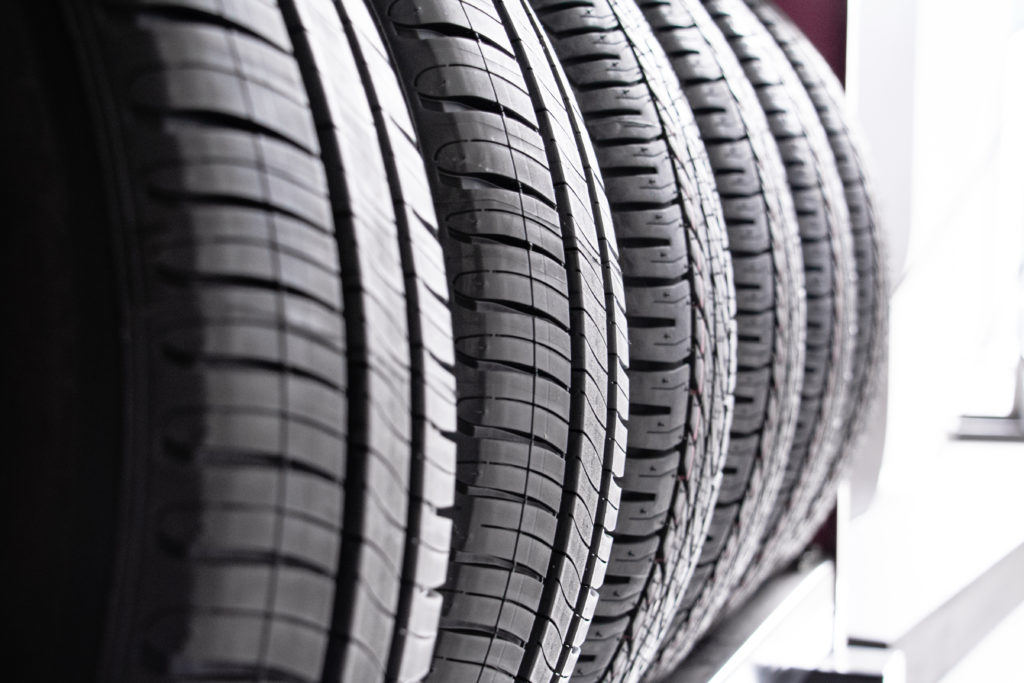How would you describe your tires? Of course, they are round and made of rubber, but what is the pattern on every tire designed to do? Your tire’s patterns, also known as treads, are responsible for your car’s traction and overall functionality. There are different tread patterns and depths that help your vehicle accomplish different tasks. Take a look at these common tread patterns as well as their pros and cons.

Symmetrical Treads
Symmetrical treads are the most common style you’ll see. This pattern has continuous, symmetrical grooves or blocks.
Pros
- Affordable – These types of tires are in high demand and are readily available. As a result, they’re relatively inexpensive.
- Easy to rotate – Because of its symmetrical pattern, this type of tire can be rotated into any position on the car.
Cons
- Poor weather performance – This tire pattern is not ideal for inclement weather. They might lose traction in rainy conditions.
Directional Treads
These types of tires have a distinguishable pattern. The treads start at the edges of the tire and move to the center, usually in an angled or “V” pattern.
Pros
- Anti-aquaplaning – These tires do an excellent job of displacing water, and that means you’re protected from aquaplaning.
- Fuel efficiency – Since this pattern has less rolling resistance, it improves overall fuel efficiency
- Good on difficult terrain – These tires are good at performing in snow and mud
Cons
- Difficult rotation– Since these tires have a specific design, they must be dismounted from the wheels and remounted during rotation.
- Expensive – These types of tires are more expensive due to their rubber compound.
Asymmetrical Treads
As the name suggests, tires with an asymmetrical tread have two different tread patterns on either side of the tire. This is because each side serves a different purpose.
Pros
- Handling – These types of tires are good at navigating both wet and dry conditions.
- Less Noisy – Asymmetrical treads are less noisy.
Cons
- Short Tire Life – These tires do not last long and will need to be replaced more often than other types of tires.
- Cost – Asymmetric tires are more expensive due to their specialty design and low availability.
- Size options – Asymmetric styles are generally only available for 17-inch wheels or larger.
Flow Optimized Patterns
These types of tires are a hybrid of asymmetric and directional tires. They have a half “V” design.
Pros
- Anti-aquaplaning – These tires protect you from aquaplaning in wet conditions.
- High-performance – These tires offer great handling and overall performance.
Cons
- Cost – Flow optimized asymmetrical tires are not as popular as traditional tires and a little more expensive.
- Inability to rotate – These tires generally cannot be rotated. Ask your mechanic if they want to dismount and remount the tires during a rotation.
Need New Tires? Let us Help!
Mighty Auto Pro is here for all of your tire needs. The team in our Montville, OH auto shop is ready to help today. With our wide range of tire services, we’ll help you get the most out of your new or current tires. Contact us today to schedule an appointment.
